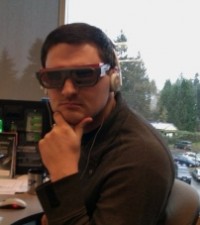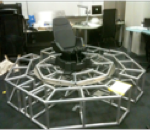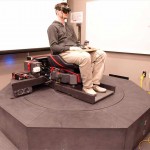
Biography
Salvar is a project-oriented viking who cannot turn down a challenge. With a B.Sc. in Computer Science from the University of Iceland, his experience includes reporting for the largest newspaper in Iceland and programming safety-critical software used in air traffic control. Salvar’s latest project involved selling all his belongings and moving to Vancouver to study Virtual Reality, and it’s psychological aspects, at SFU’s iSpace lab.
Salvar’s interests include video games, interface design, experimental psychology, writing, cooking and pretty much anything else that calls for combining analytical and creative approaches. To support his exuberant grad student lifestyle he assists in teaching courses at SFU, including an introductory graduate programming course and third-year undergraduate course on interaction design, as well as assisting Dr. Bernhard Riecke with whatever programming problems that need solving in the iSpace lab at the time.
Projects
iSpaceMecha
Collaboration between the iSpace lab at SIAT and Mechatronics Undergraduate Interns to design and build a unique, virtual reality multi-modal motion simulator The iSpace program is centered on investigating what constitutes effective, robust, and intuitive human spatial orientation and behaviour. This fundamental knowledge will be applied to design novel, more effective human-computer interfaces ...
Spatial Updating With(out) Physical Motions?
How important are physical motions for effective spatial orientation in VR? Most virtual reality simulators have a serious flaw: Users tend to get easily lost and disoriented as they navigate. According to the prevailing opinion, this is because physical motion cues are absolutely required for staying oriented while moving. In this study, we investigated how physical motion cues contribute ...

